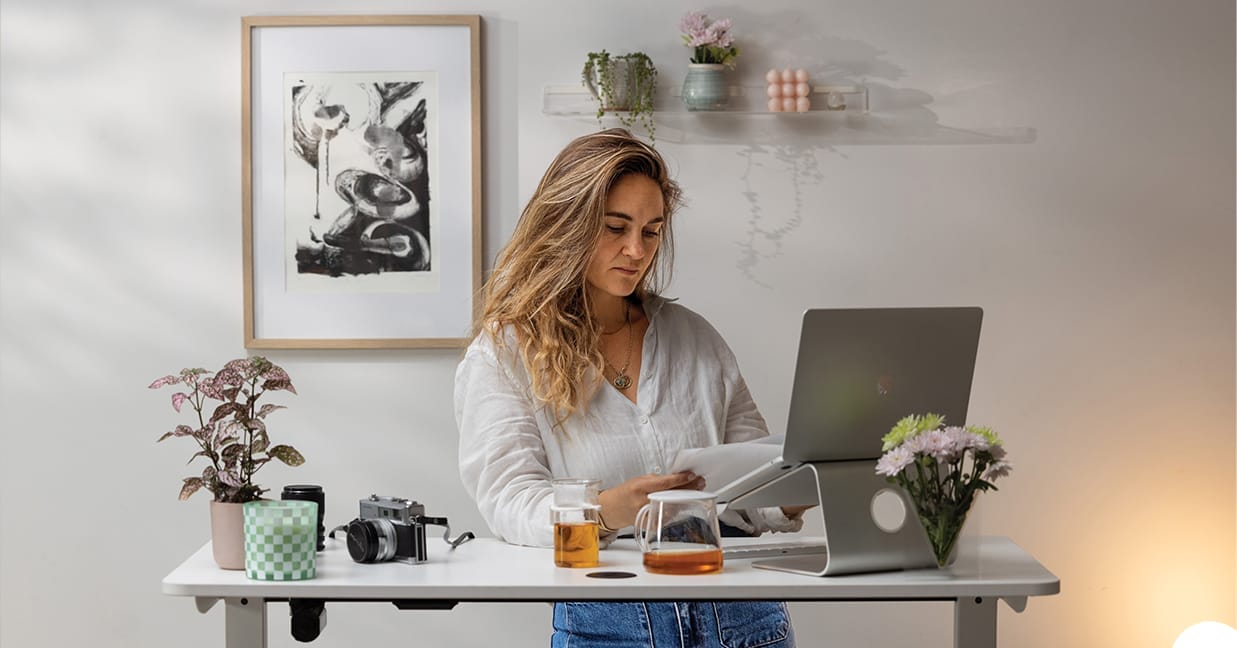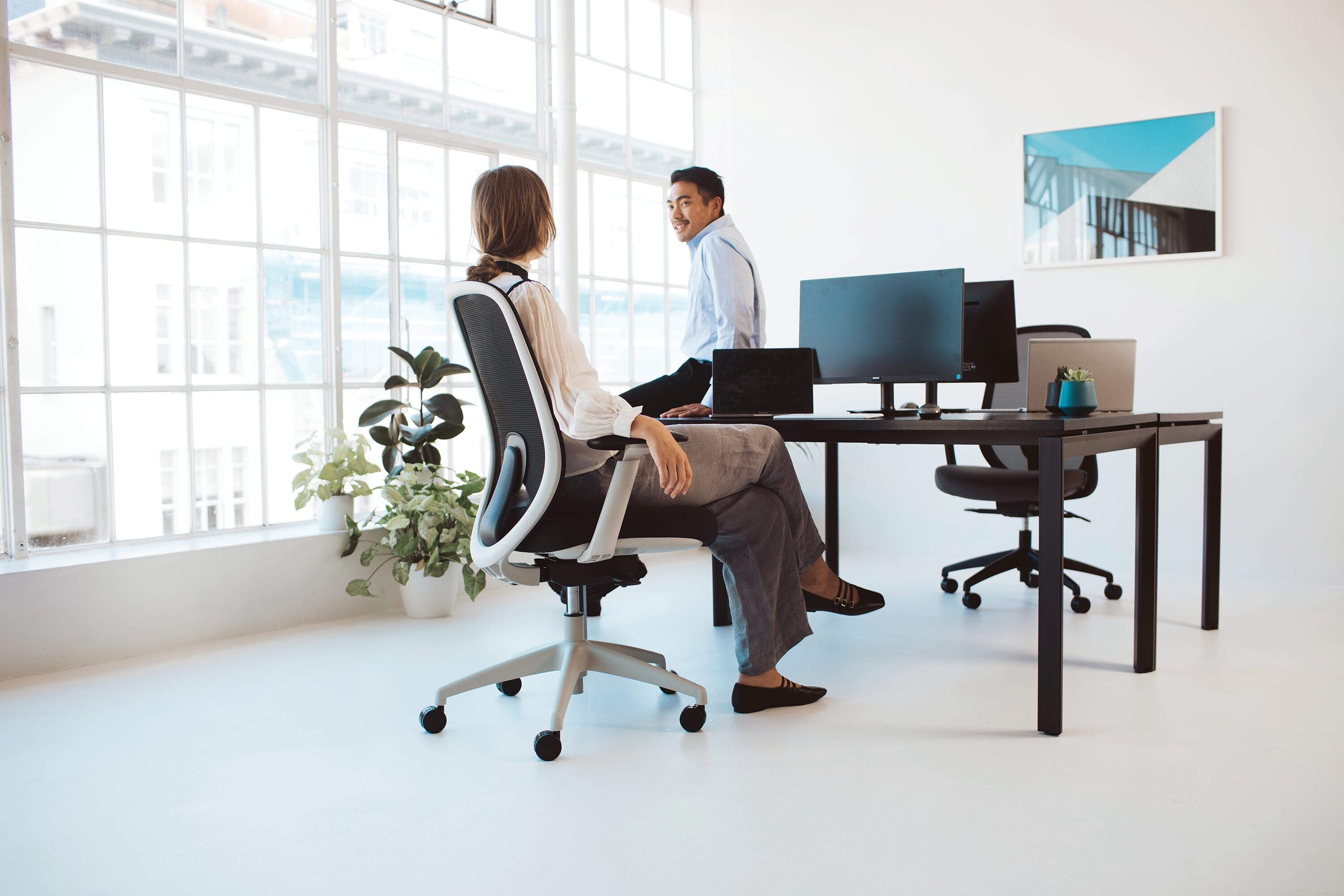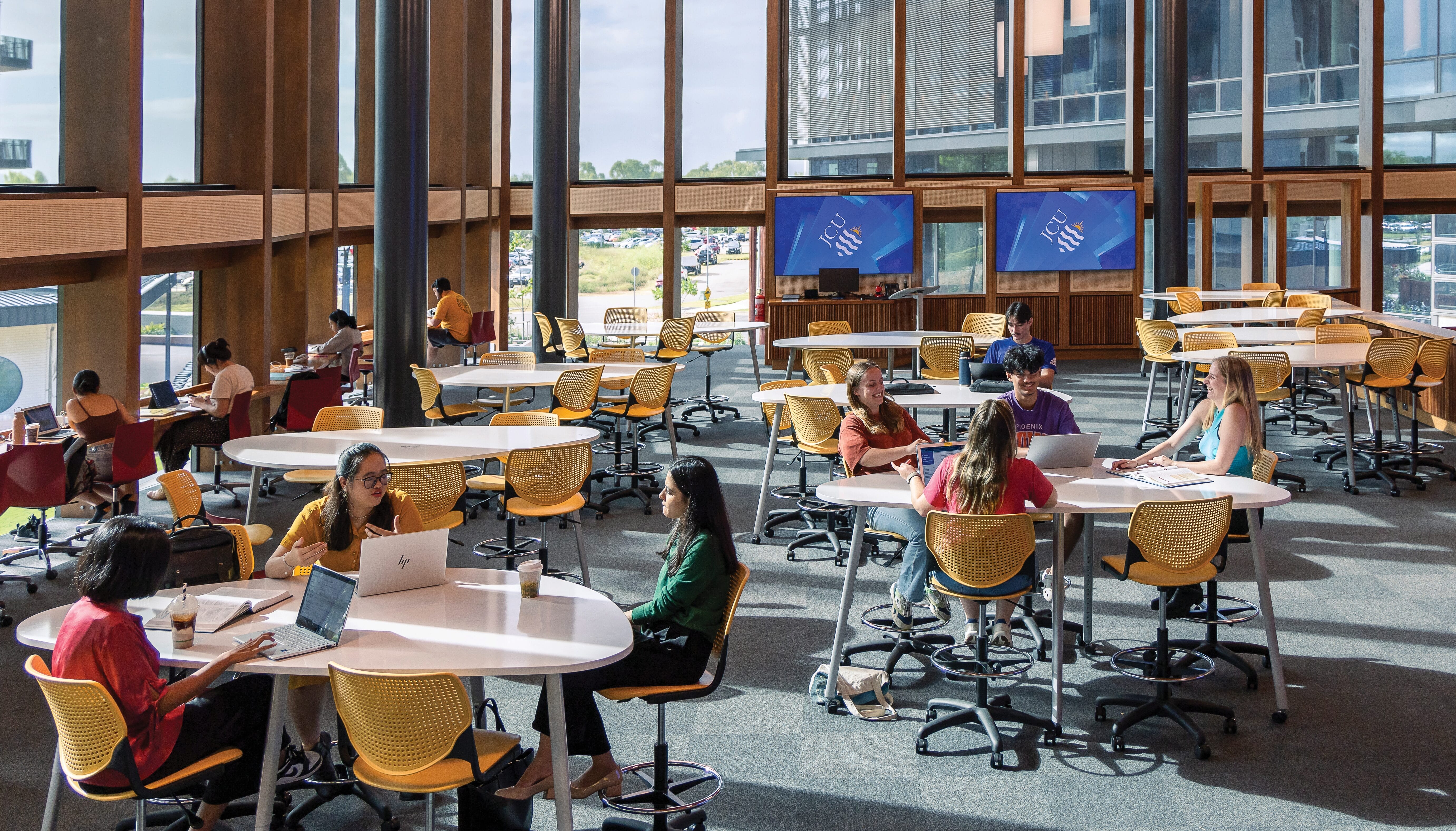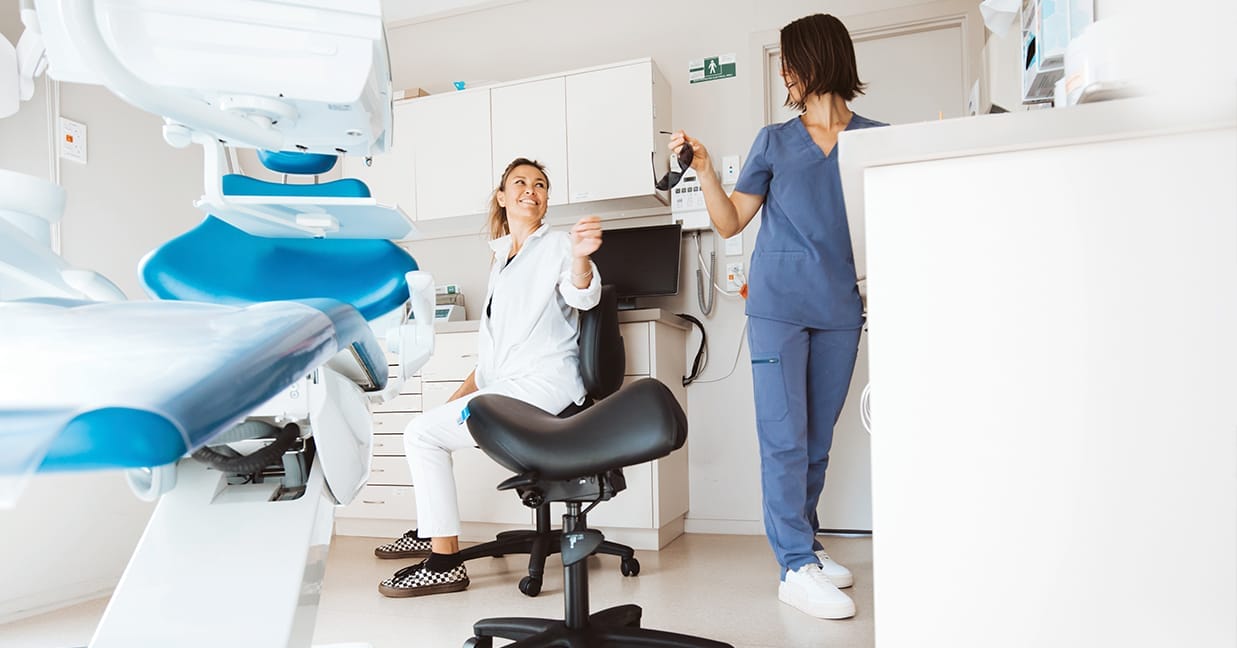One of the most common myths about workplace injuries is that every ache and pain can be avoided with proper posture and ergonomics alone. A growing body of evidence suggests the picture is more complex, with several factors contributing to our musculoskeletal problems.
At Buro, we support people with the best ergonomic seating possible to maximise health and wellbeing. However, to fully mitigate injury risks, a comprehensive approach to injury prevention is essential. This includes reducing workplace stress, finding meaning in your work, and frequently changing positions. While workplace ergonomics is a crucial element of overall wellbeing, it should be considered alongside other factors like movement, stress management, meaningful work, connection, and the basics of sleep, diet, and exercise.
In this article, we’ll explore some common misperceptions about posture, whether sitting down all day is the ‘new smoking’, and how staff wellbeing can contribute to our sore wrists, necks, and backs.
The perfect posture myth
While posture and office ergonomics are vital components in your workstation setup, assuming a ‘correct’ fixed position all day, every day isn’t the only aspect to avoiding injuries. In fact some studies suggest, there’s no such thing as a perfect position.
The Journal of Orthopaedic and Sports Physical Therapy 2019 concluded there’s no ideal way to sit to prevent pain and injuries. The journal dismissed the traditional notion that there’s a right way to sit at your desk. Contrary to popular belief, they state there’s no strong evidence that a single optimal posture exists for office work, as we all have different needs.
The Journal reported that our bodies are meant to flex and move throughout the working day. There are natural variations in our spinal curvatures, and no spinal curvature is more immune to pain and injuries, the report found.
Increasingly, evidence suggests that variable, flexible posture and dynamic movement are ideal, allowing our spines to move in different positions.
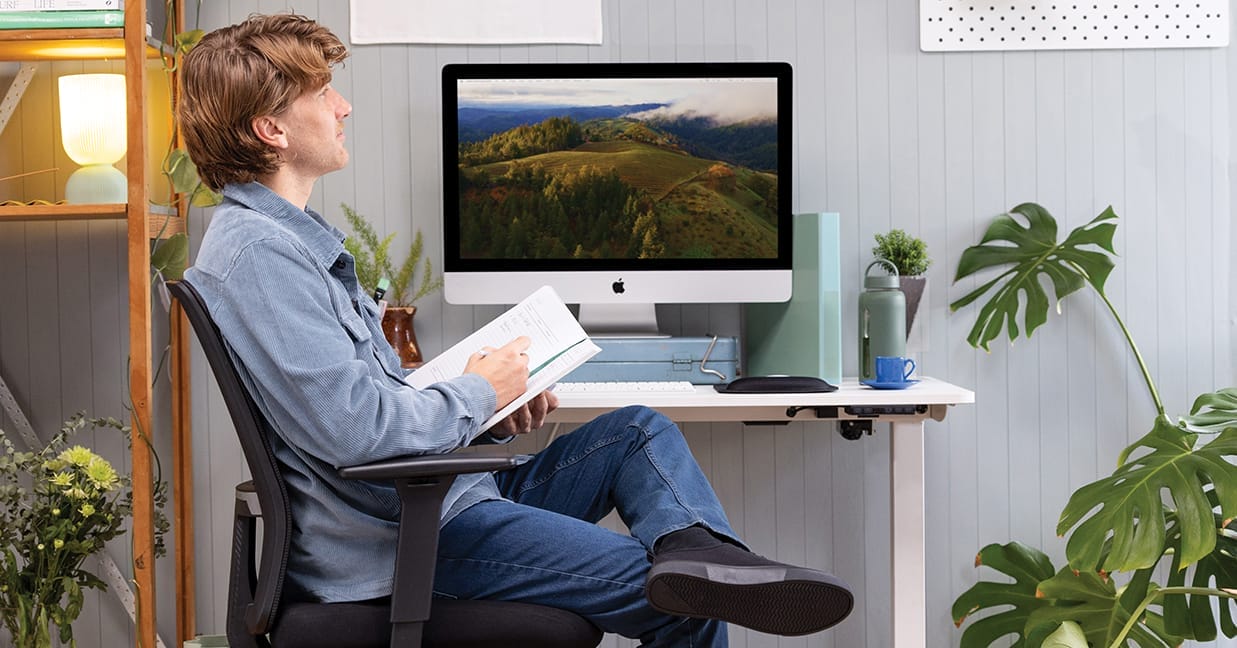
Ideally, you should be able to shift and move regularly in your seat to find a comfortable position that’s right for you.
It’s about more than your office chair
While ergonomic seating and equipment offer a great layer of protection against sore backs and necks, avoiding workplace injuries is not just about having the right furniture.
Studies have shown that workplace stress and job demands are also major factors.
What the experts say
A 2021 report, ‘Occupational and Non-Occupational Risk Factors for Neck and Lower Back Pain Among Computer Workers’, found that prolonged computer time and increased job demands led to a higher risk of neck pain.
It also found that certain factors helped lower the risk of injuries, such as social support at work, and the ability to get up and move around the office, helped reduce the risk of injuries.
An earlier report in 2018 found that psychosocial exposures, such as stress and low control over workplace decisions, led to more neck pain, increased neck disability, and lower workplace productivity.
The 2018 study suggested that treatment for injuries should factor in workplace stressors to improve the odds of long-term recovery.
What lessons can employers learn from these studies?
Organisations need to consider whether stress and workload are factors in workplace injuries. While ergonomic furniture is always advised, environmental factors also play a major part.
Staff wellbeing is vital. US psychologist Professor Barry Schwartz argues that work, characterised by meaning, autonomy and the right amount of challenge, can lead to better health outcomes and workplace wellbeing.
Professor Schwartz says most company health programmes are too heavily focused on health factors outside of work when they should consider staff wellbeing in the office, and making their environments more meaningful.
Schwartz believes employees are more likely to be healthy and perform well when they find their tasks meaningful and are given autonomy and challenge in the workplace. That’s food for thought for any employer looking to reduce workplace injuries.
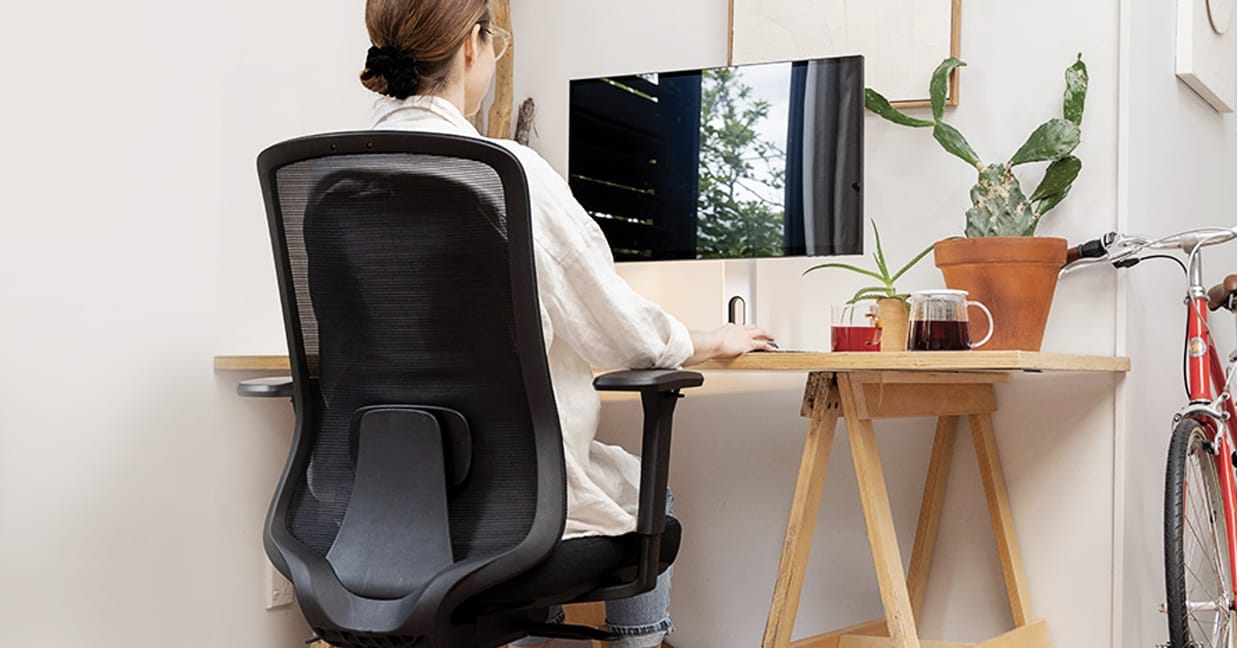
Buro Elan in home office
Sitting isn’t the ‘new smoking’
Several studies have appeared to link sitting down at work with serious health problems such as the risk of type two diabetes, cardiovascular issues and musculoskeletal problems. But that isn’t strictly true.
Alarming statements like ‘sitting is the new smoking’ often make headlines in the media, but studies linking sitting to serious health problems refer to sedentary lifestyles.
A sedentary lifestyle involves long hours of lying or sitting down, engaged in low-energy activities. But it’s important to differentiate sitting down at work from sedentary living.
Working in an office doesn’t automatically mean you’re living a sedentary lifestyle. One dictionary definition of sedentary is ‘inactive’, and inactivity is a key thing to avoid. Engage in regular movement at work, even if it’s just tiny stretches and flexes.
Getting up to move around and taking microbreaks at work can keep you active. Even moving your legs, shifting your hips and lifting your heels can lower the risks associated with sedentary lifestyles.
A 2022 study found that fidgeting during prolonged sitting improved glycaemic control for obese people. Regular and dynamic movement at work, however small, can make a positive impact.
So, sitting down isn’t the new smoking. But sitting in an inactive way, and not exercising in your downtime, could be.
Top tip: Soleus push-ups are a super simple way to incorporate more movement and stimulate your muscles at your desk.
Dynamic seating for workplace wellbeing
Active, dynamic seating in the workplace can reduce the risk of repetitive strain injuries and long-term health problems arising from a sedentary lifestyle.
At Buro, we offer a range of seating featuring Dynamic Intelligence™ technology and synchro mechanisms to encourage movement at work, operating in harmony with your body.
Dynamic Intelligence™ technology is a revolutionary form of seating with no levers or manual adjustments, building on the latest ergonomic research.
Our self-weighting tension system intuitively responds to your body as you move, improving posture by encouraging a neutral spinal position and reducing spinal fatigue.
Our range of Dynamic Intelligence™ seating includes the Buro Mentor office desk chair
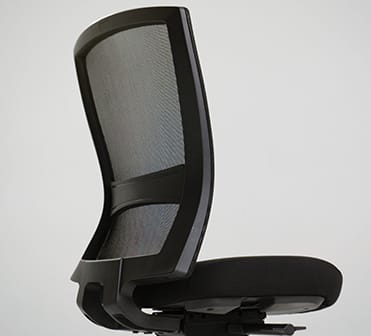
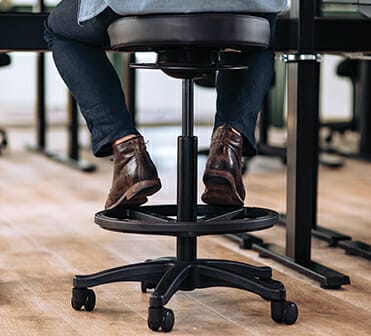
For those ready to fully embrace active seating in the workplace, the height-adjustable Buro Polo drafting stool keeps the core engaged, encouraging ongoing postural change.

